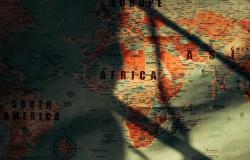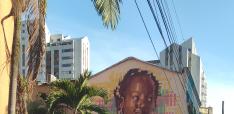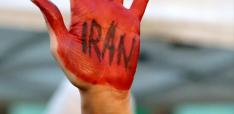New Development Bank’s Role in the International Financial Architecture

The culminating piece in the Emerging Global Governance (EGG) Project's commentary series provides an overview of the New Development Bank's role in the international financial architecture and global systemic perspective.
Brazil, Russia, India, China, and South Africa (collectively referred to as the BRICS countries or BRICS)[i], comprising 42% of the global population, have, as a block, been among the fastest growing developing countries in recent decades. The BRICS’ share of world Gross Domestic Product (GDP) measured in Purchasing Power Parity (PPP) terms rose from about 18% in 2000 to about 31% by 2020, a share double that of countries of the European Union (EU). However, the role and voice of these countries in the global financial architecture as measured by their voting shares, does not adequately reflect this new economic reality. Western developed countries control the large majority of voting shares in global financial institutions and have a greater voice in terms of the way the institutions are run.
The establishment of the NDB was one of the results of the political and economic dissatisfaction arising out of this growing disparity between the BRICS’ share of the world economy and their representation in the institutions of the global financial architecture. The origins of the NDB reflect the views of the BRICS government leaders that their calls for a more representative international financial architecture, with an increase in the voice and representation of developing countries in existing international financial institutions, were met with a disappointing response. Existing financial institutions dominated by Western developed countries were slow to change prevailing governance structures that gave them disproportionate power. The NDB, therefore, is a response of the BRICS nations aimed fundamentally at influencing the global financial architecture to be more representative of the growing economic clout of these countries.
-
Key elements of NDB governance
The NDB’s governance model differs from that of earlier multilateral development banks (MDBs) in a number of important respects. First, the BRICS countries as its five founding members, all have equal voting shares in the institution. Each member had a 20% share of the NDB’s capital at the time of establishment and even with new members joining, the five founders will always hold no less than 55% of the institution’s voting rights. This structure of shareholding is fundamentally different from that of all existing MDBs. For instance, the United States (US) is the dominant shareholder in the World Bank and China is the single largest shareholder in the newly established Asian Infrastructure Investment Bank (AIIB); all other members have smaller shareholdings in these institutions. Other established MDBs also have similar shareholding arrangements. The NDB structure of shareholding provides for an equal voice to all five founders in the institution, despite substantial differences in their economic size.[ii] The governance model also calls for greater agreement (if not consensus) among the founders on important institutional decisions as it requires most decisions to be made by simple majority, which implies that at least 3 of the 5 countries would have to agree. Another important difference is that the Presidency of the NDB is by rotation amongst all its member countries. This model is in response to the dissatisfaction of the BRICS (and other developing) countries in the appointment process of the chief executives of existing global financial institutions wherein certain developed countries have the right to nominate their own nationals to such positions.
-
Key elements of NDB’s operational model
Established MDBs, such as the World Bank, have faced criticisms, particularly from their larger and relatively more advanced borrowers, such as the BRICS countries, for their bureaucratic and slow operational approaches in which project approvals can sometimes take years. Despite efforts on the part of these institutions to reform their internal processes and adopt borrower country standards for environmental and social issues as well as procurement procedures, progress has been seen to be slow.
The BRICS countries addressed many of these “pain points” in their relationship with existing institutions in the operational model of the NDB. Speed of approval is a key element of the NDB’s operational model with its stated target of approving loans within six months, while not compromising on quality. The NDB also uses country systems to deal with the environmental and social aspects of, as well as procurement procedures related to, the infrastructure projects it finances, thereby removing the need for its borrowers to deal with yet another external institution’s system. With a limited clientele of (initially) just five middle income country borrowers, this is arguably more achievable for the NDB than for global institutions such as the World Bank that deal with many more countries at widely different stages of development.
Another of the NDB’s major departures from the operational model of existing institutions is its willingness to provide local-currency loans to its members. Local currency loans reduce the foreign exchange risk that borrowers face in the event that their currencies decline in value relative to that of currencies such as the US Dollar or Euro, which are typically the currencies that most other MDBs provide their loans in. The NDB has thus far provided local currency financing to China, India, and South Africa at competitive interest rates, though, similar to other MDBs, offering rates better than the sovereign in local currency is a challenge for NDB too.
The NDB has also ensured that the pricing of its loans remains competitive with that of more established MDBs. Given that the NDB is currently rated AA+ while most other established MDBs are rated AAA, and therefore the cost at which the NDB raises funds in the markets is higher, this is a challenge for the NDB. Since the NDB maintains a conservative financial profile, similar to other MDBs, essentially this implies that the NDB needs to manage itself more efficiently to keep its operating costs low to make up for the cost differential. A lean management and staff structure is, therefore, also a key feature of the NDB’s operational model. Such a set-up also implies, however, that the NDB is less ambitious than some other MDBs in terms of sectoral analysis, economic research, and provision of global public goods, which other MDBs often support.
-
NDB’s impact on international financial architecture
As a new institution, the NDB is still small relative to established MDBs. Since 2015, it has approved 77 projects to date for a total amount of US$ 29.7 billion. The World Bank Group (2021 Report), in comparison, had approved nearly $157 billion during April 2020-June 2021 alone for over 100 countries. It will, therefore, clearly take time for the NDB to make its presence felt in the MDB community. That said, the NDB has demonstrated a few key issues that are likely to have an impact on the global financial architecture.
First, the fact that the NDB has been established is, in and of itself, an interesting development in global finance. Even with just five shareholders, all borrowers, all developing countries, and with no developed country shareholders, it managed to obtain achieve a rating of AA+, just one notch below the AAA rating of well-established MDBs. The high rating, combined with its low-cost operational model, enables the NDB to mobilize funds from global capital markets at competitive prices for its members and thereby contribute to their development.
Second, the NDB has also demonstrated that its new model of governance with no shareholder having veto power seems to work. Despite orders of magnitude of differences in economic size amongst the five founders, the lack of veto authority for any country has not yet proved to be a significant hurdle in operational terms.
Third, the NDB is the first concrete institution established by the BRICS countries. Driven by the motivation to establish a new institution and make it a success, NDB’s founding shareholders have clearly worked well together, and overcome whatever differences they may have had, in the initial phase of its establishment.
-
Strategic challenges for the NDB
The NDB was established based on the convictions of its founders regarding the close relations between the BRICS countries, increased economic cooperation, and the need to address financing constraints they faced particularly for infrastructure and sustainable development.
To meet these lofty goals, the NDB’s most critical challenge today is one of scaling up. It needs to become a large enough player amongst the community of MDBs to make a material difference within the global financial architecture. The NDB will have to become a significant, reliable, and trustworthy lender to its members in order for its new models of governance and new operational approaches to be seriously considered as successful models worthy of emulation by more established institutions. Scale will also enable it to command the influence that it needs to be able to contribute to the international financial system and give a louder voice to the BRICS countries and its other, future, borrowing members. Can the NDB provide the resources that its borrowers need rapidly enough to scale up? In arriving at an answer to this question, the NDB faces some significant challenges, two of which are discussed below.
a) Navigating geopolitics and tensions among members
The BRICS have cooperated well thus far in establishing the NDB. The question facing the institution now is whether, in the face of a growing set of challenges facing almost all of its founding shareholders, this degree of cooperation can and will continue. US-China tensions, nascent in 2015, have grown over the past seven years in scale and scope. While thus far, the direct impact of these tensions on the NDB’s operations has been minimal, it remains an open question as to whether the NDB can continue to be insulated from the impacts of these tensions going forward especially in terms of fund-raising and concerns about potential future US sanctions against China as the US dollar is its base operational currency.
Navigating the impact of Russia’s invasion of Ukraine will be another critical challenge for the NDB going forward. While the NDB has said that new operations in Russia will be put on hold, the current extensive sanctions from most advanced countries could pose significant difficulties for the NDB in raising funds from global markets as well as potentially disbursing funds to and receiving repayments from Russia. Fitch, a rating agency, has already revised its outlook for the NDB from Stable to Negative in its latest review of the NDB’s credit rating based on considerations arising from Russia’s invasion of Ukraine.
The tense India-China bilateral relations, since the 2020 border clashes, could influence critical decisions on issues such as membership expansion or capital increases. Brazil and South Africa also have their fair shares of political and economic challenges and these could create challenges for the NDB as well.
b) Increasing capital
The COVID-19 pandemic has resulted in the NDB committing to lend US$10 billion in emergency assistance to its five members. While such emergency assistance clearly further strengthens the NDB’s institutional importance to its founders, it is also almost certainly the case that this unanticipated emergency lending has used up more capital than was probably anticipated in a pre-COVID-19 scenario. This might require the NDB to raise additional capital sooner than might have been envisaged pre-COVID-19 to continue to scale up. The founding shareholders will most probably have to put up most of the new capital that may be required, particularly because the pace at which new capital may be brought in by new members (United Arab Emirates, Bangladesh, Uruguay, and Egypt in 2021) is likely to be relatively slow. In the context of the challenges facing the founding shareholders, as discussed above, the question remains as to whether such additional capital contributions will be forthcoming. Navigating future growth could be another challenge facing the NDB posed by the necessity of additional capital.
-
Conclusion
Nearly seven years after its establishment, the NDB has made a sound start towards meeting the high expectations of its founders. It has demonstrated that a new institution with new operational approaches and innovative governance mechanisms, more in tune with what large developing countries want, can work well. However, the world in which the NDB finds itself now is very different from the world seven years ago. The NDB faces several strategic challenges as it looks ahead over the next five to ten-years of its operations. How well the founders continue to work together, how well the new members are integrated into the institution, and how the NDB manages its capital are among the key issues that it faces.
The NDB is undoubtedly an interesting experiment within the global financial architecture, and it has made a good start. The core elements for its success are in place. If the institution navigates well the current challenges it faces, scales up significantly, and can demonstrate that its projects have been successfully implemented and are achieving their intended objectives, it clearly has the potential to make a significant impact on the international financial system. If, however, its financing to its members remains small relative to that of the more established MDBs, then the NDB faces the risk that it remains an interesting experiment and its influence on the global financial architecture could remain marginal.
Dr P S Srinivas (Srini) is Visiting Research Professor at the East Asian Institute, National University of Singapore. Before joining EAI, he worked with the New Development Bank (NDB), Shanghai, China from 2016 to 2021 as Director General, Front Office of the President and Director General, Strategy, Policies and Partnerships. Prior to the NDB, he worked at the World Bank, Washington DC, USA for nearly twenty years focusing on financial sector issues in Asia and Latin America. Prior to the World Bank, he was with the Asian Development Bank, Manila, Philippines and ICICI, Mumbai, India. He was also a Visiting Professor of Finance at the Indian School of Business, Hyderabad, India. Over the past three decades, he has worked in over 30 countries and has extensive experience in advising governments around the world at the senior-most levels on a variety of development issues. In his work at EAI, he has published on financial sector issues in China. Dr Srinivas holds PhD and MA degrees from Cornell University, Ithaca, NY, USA; an MBA from the Indian Institute of Management, Ahmedabad, India; and a B Tech in Chemical Engineering from the Indian Institute of Technology, Madras, India.
Corresponding author’s email address: pssrinivas@visitor.nus.edu.sg
Bert Hofman is Director, East Asian Institute and Professor of Practice at the Lee Kuan Yew School of Public Policy at the National University of Singapore. He worked with the World Bank for 27 years, 22 years in Asia, 12 years on China. Mr. Hofman was the World Bank Country Director for China 2014-2019 and Chief Economist for the World Bank in the East Asia and Pacific Region 2011-2014. Before working with the World Bank, Mr. Hofman worked at the Kiel Institute of World Economics, the OECD, and NMB Bank (now ING Bank). Mr. Hofman has advised governments around the world, and has published on fiscal policy, debt issues, and China and Indonesia’s recent economic history. His latest book is an edited volume, Innovation and China’s Global Emergence.
Photo by Nothing Ahead
ENDNOTES
[i] Goldman Sachs (2001) coined the term BRICs to refer Brazil, Russia, India, and China. https://www.goldmansachs.com/insights/archive/archive-pdfs/build-better-brics.pdf, accessed on April 22, 2022. South Africa joined the grouping in 2010 and the acronym changed to BRICS.
[ii] For example, in current US dollars in 2020, China’s GDP was US$14.7 trillion while that of South Africa was US$330 billion, although both have the same share in the NDB.


